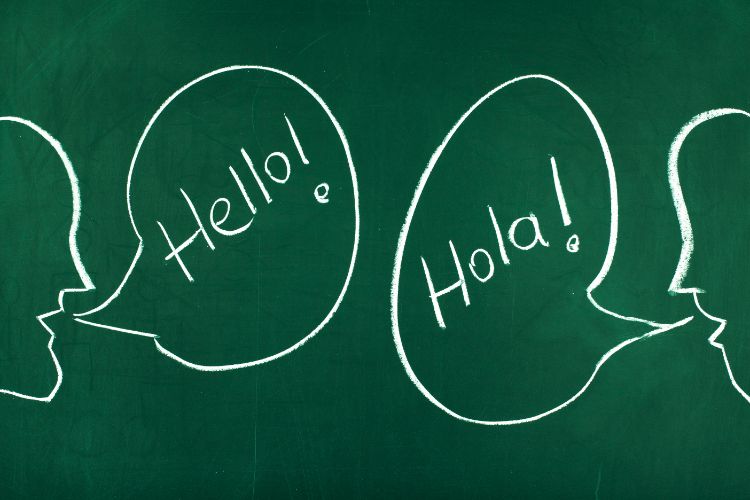Bilingual education, a method of teaching that integrates two languages in the learning process, has been a topic of discussion and research for many years. In early childhood development, the impact of bilingual education is particularly noteworthy. This article aims to explore the various facets of bilingual education and its profound effects on the cognitive, social, and academic development of children.
Understanding Bilingual Education
Bilingual education involves the use of two languages as mediums of instruction, allowing students to develop proficiency in both. It goes beyond merely teaching a second language; instead, it integrates language learning with the overall curriculum. This approach helps students become not only bilingual but also bi-literate, enhancing their cognitive abilities.
- Bilingualism: The acquisition of proficiency in two languages.
- Bi-literacy: The ability to read and write effectively in both languages.
- Integrated approach: Incorporating language learning into various subjects.
The Cognitive Benefits of Bilingual Education
Bilingual education has a profound impact on cognitive development, offering several advantages to young learners.
1. Enhanced Executive Function
The executive function, responsible for cognitive processes such as problem-solving, decision-making, and working memory, is notably strengthened in bilingual individuals. The constant need to switch between languages and inhibit one while using the other enhances these cognitive functions.
2. Improved Metalinguistic Awareness
Bilingual children often develop better metalinguistic awareness — the ability to think about language, understand its rules, and manipulate its components. This heightened awareness positively influences their overall language skills and can extend to improved performance in subjects like reading and writing.
3. Greater Cognitive Flexibility
Cognitive flexibility, the ability to adapt to changing situations, is a key skill honed through bilingualism. Children exposed to multiple languages learn to navigate different linguistic and cultural contexts, fostering adaptability and open-mindedness.
Social Benefits of Bilingual Education
Beyond cognitive advantages, bilingual education significantly impacts a child’s social development.
1. Cultural Awareness and Sensitivity
Bilingual education exposes children to different cultures and perspectives, fostering cultural awareness and sensitivity. This early exposure contributes to a more inclusive and globally minded society.
2. Improved Communication Skills
Bilingual individuals often exhibit advanced communication skills. The ability to switch between languages and communicate effectively in various settings enhances interpersonal skills, making children more adept at navigating social interactions.
3. Bridge Building in Diverse Communities
Bilingual education acts as a bridge between communities with different primary languages. It promotes inclusivity and helps build connections among individuals from diverse linguistic backgrounds.
Academic Achievements and Language Proficiency
Bilingual education not only shapes cognitive and social aspects but also significantly influences academic achievements and language proficiency.
1. Improved Performance in Core Subjects
Studies have shown that bilingual students often outperform their monolingual counterparts in core subjects such as mathematics and science. The cognitive skills developed through bilingualism contribute to enhanced problem-solving abilities.
2. Higher Proficiency in Additional Languages
With consistent exposure to two languages, children in bilingual education programs naturally attain a high level of proficiency in both. This proficiency extends beyond conversational skills, encompassing reading, writing, and comprehension.
3. Long-Term Educational Advantages
Bilingual education lays the foundation for long-term educational advantages. Bilingual individuals are often more likely to pursue higher education and excel in professional fields that require language proficiency.
Frequently Asked Questions (FAQs)
Q: What age is suitable for introducing bilingual education?
A: Bilingual education can be introduced as early as preschool or kindergarten. Starting at a young age allows children to develop language proficiency more naturally.
Q: Will bilingual education confuse a child and hinder language development?
A: No, research suggests that bilingualism does not confuse children. In fact, it enhances cognitive abilities and language skills, providing numerous developmental benefits.
Q: Are there specific challenges associated with implementing bilingual education in schools?
A: While bilingual education offers various benefits, challenges may include the need for qualified bilingual teachers and effective curriculum design that integrates language learning seamlessly.
The impact of bilingual education on early childhood development is extensive, influencing cognitive abilities, social skills, and academic achievements. Embracing bilingualism from a young age not only provides linguistic advantages but also molds well-rounded individuals ready to navigate a diverse and interconnected world.
